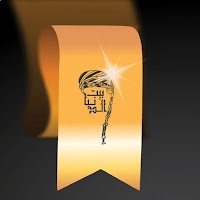Bait Al_Dunia
Some people will be surprised when
they know that there is Omani men’s fashion designer and they will ask directly
for fashion designer especially as the costume is the Oman dishdasha and
nothing else. However, Mohammed AL.Subhi proved that the Omani dress for men
scalable and amendment. Also, there are a lot of beautiful details that could
be highlighted such as accessories bearing of the men's uniforms and increase
his elegance on special occasions, weddings and official functions. Mohammed
AL.Subhi name began to shine two and a half years almost since, and is obsessed
with the idea of the transfer of the men's uniforms and beautiful heritage of
Oman to the world.
Mohammed AL.Subhi is the first traditional
designer of men's fashion in Oman. He tried to combine between the past and present
and show the world the beautiful heritage of the Sultanate and a character.
Muhammad AL.Subhi today owns brand
dubbed known
«the lower house» and the secret of his choice of this name says: «I think that
the name is unique, any of the bridegroom
have come to our store be ready
to begin a different life in own house .
Muhammad participate in a number of
the most fashion shows held locally, including the display associated with the
launch of the magazine "the elegance of the Gulf" to twice with a
group of Arab women who are known fashion designers. As well as his
participation in the show was held in the Kingdom of Bahrain Forum on the
sidelines of the Gulf businesswomen second and another in the United Arab
Emirates in Sharjah in the Gulf bride Festival.
Mohammed aspires because he has a
large showroom and braid Oman, and took it upon himself to be an ambassador for
traditional Omani fashion, men's fashion around the world, he said: «I will not
stop working until all realize my goals.
Bait AL.Dunia contacts:





















